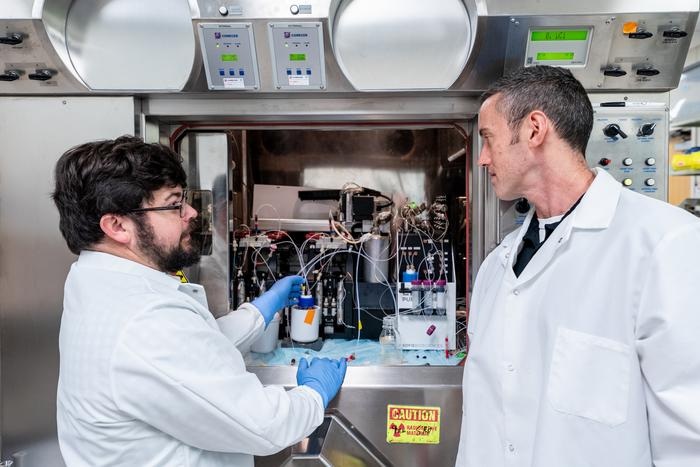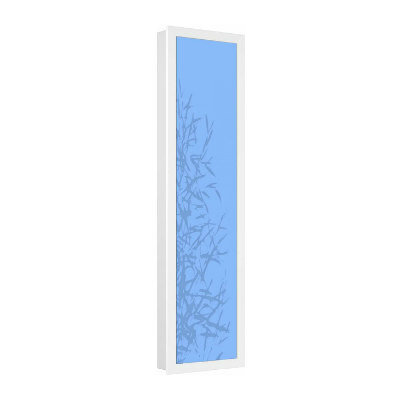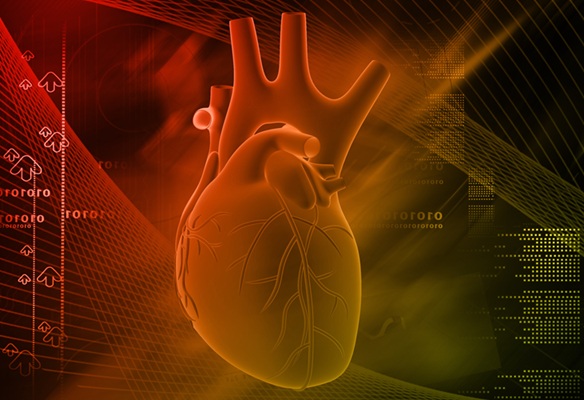Innovative PET Imaging Technique to Help Diagnose Neurodegeneration
|
By MedImaging International staff writers Posted on 07 Mar 2025 |

Neurodegenerative diseases, such as amyotrophic lateral sclerosis (ALS) and Alzheimer’s disease, are often diagnosed only after physical symptoms appear, by which time treatment may no longer be effective. Positron emission tomography (PET) is a nuclear imaging method primarily used for diagnosing conditions like cancer. Now, an innovative advancement is enhancing the technique’s ability to detect signs of neurological diseases.
Researchers at St. Jude Children’s Research Hospital (Memphis, TN, USA) have repurposed the antioxidant drug edaravone, which is typically used to treat ALS, as a probe for central nervous system PET imaging. This innovative technique allows the detection of oxidative stress, a condition that contributes to brain damage, thus providing a clearer path for diagnosing neurological diseases. Reactive oxygen and nitrogen species (RONS) are a group of chemically reactive molecules crucial in cell signaling and growth. However, when RONS accumulate, they cause oxidative stress, leading to tissue damage and dysfunction. This stress is linked to various neurodegenerative diseases. Detecting oxidative stress through non-invasive imaging offers the potential to diagnose and treat conditions like ALS and Alzheimer’s disease earlier, when treatments could be more effective.
Apart from neurodegenerative conditions, oxidative stress also plays a role in numerous other neurological diseases, such as stroke. In these cases, damage does not solely occur from the initial injury. Reactive chemicals released during oxidative bursts, including hydroxyl and peroxyl radicals, can trigger a chain reaction of further oxidative damage. As an antioxidant, edaravone naturally interacts with RONS, prompting the researchers to propose that the drug could be used to enhance imaging efforts. To test this, they radiolabeled edaravone by replacing atoms in the molecule with radioactive isotopes, allowing them to track the movement and breakdown of the drug. Once administered, the radiolabeled drug emits positrons—subatomic particles detectable only by a PET scan—illuminating the area where the drug accumulates, which coincides with the buildup of RONS. The drug's ability to bind RONS even at low doses makes it ideal for PET imaging while still serving as an antioxidant treatment at standard doses, providing a dual benefit of diagnosis and therapy. These findings were published in Nature Biomedical Engineering.
“Our diagnostic tests are on the order of nanograms to micrograms of material, so the body doesn’t even know it’s there,” said corresponding author Kiel Neumann, PhD, St. Jude Department of Radiology. “Ultimately, our goal is to use this to impact clinical care. Therapeutic intervention using this technology for clinical disease management is the future.”
Latest Nuclear Medicine News
- Novel Bacteria-Specific PET Imaging Approach Detects Hard-To-Diagnose Lung Infections
- New Imaging Approach Could Reduce Need for Biopsies to Monitor Prostate Cancer
- Novel Radiolabeled Antibody Improves Diagnosis and Treatment of Solid Tumors
- Novel PET Imaging Approach Offers Never-Before-Seen View of Neuroinflammation
- Novel Radiotracer Identifies Biomarker for Triple-Negative Breast Cancer
- New Molecular Imaging Test to Improve Lung Cancer Diagnosis
- Novel PET Technique Visualizes Spinal Cord Injuries to Predict Recovery
- Next-Gen Tau Radiotracers Outperform FDA-Approved Imaging Agents in Detecting Alzheimer’s
- Breakthrough Method Detects Inflammation in Body Using PET Imaging
- Advanced Imaging Reveals Hidden Metastases in High-Risk Prostate Cancer Patients
- Combining Advanced Imaging Technologies Offers Breakthrough in Glioblastoma Treatment
- New Molecular Imaging Agent Accurately Identifies Crucial Cancer Biomarker
- New Scans Light Up Aggressive Tumors for Better Treatment
- AI Stroke Brain Scan Readings Twice as Accurate as Current Method
- AI Analysis of PET/CT Images Predicts Side Effects of Immunotherapy in Lung Cancer
- New Imaging Agent to Drive Step-Change for Brain Cancer Imaging
Channels
Radiography
view channel
AI Detects Fatty Liver Disease from Chest X-Rays
Fatty liver disease, which results from excess fat accumulation in the liver, is believed to impact approximately one in four individuals globally. If not addressed in time, it can progress to severe conditions... Read more
AI Detects Hidden Heart Disease in Existing CT Chest Scans
Coronary artery calcium (CAC) is a major indicator of cardiovascular risk, but its assessment typically requires a specialized “gated” CT scan that synchronizes with the heartbeat. In contrast, most chest... Read moreMRI
view channel
New MRI Technique Reveals Hidden Heart Issues
Traditional exercise stress tests conducted within an MRI machine require patients to lie flat, a position that artificially improves heart function by increasing stroke volume due to gravity-driven blood... Read more
Shorter MRI Exam Effectively Detects Cancer in Dense Breasts
Women with extremely dense breasts face a higher risk of missed breast cancer diagnoses, as dense glandular and fibrous tissue can obscure tumors on mammograms. While breast MRI is recommended for supplemental... Read moreUltrasound
view channel
Wireless Chronic Pain Management Device to Reduce Need for Painkillers and Surgery
Chronic pain affects millions of people globally, often leading to long-term disability and dependence on opioid medications, which carry significant risks of side effects and addiction.... Read more
New Medical Ultrasound Imaging Technique Enables ICU Bedside Monitoring
Ultrasound computed tomography (USCT) presents a safer alternative to imaging techniques like X-ray computed tomography (commonly known as CT or “CAT” scans) because it does not produce ionizing radiation.... Read moreGeneral/Advanced Imaging
view channel
CT Colonography Beats Stool DNA Testing for Colon Cancer Screening
As colorectal cancer remains the second leading cause of cancer-related deaths worldwide, early detection through screening is vital to reduce advanced-stage treatments and associated costs.... Read more
First-Of-Its-Kind Wearable Device Offers Revolutionary Alternative to CT Scans
Currently, patients with conditions such as heart failure, pneumonia, or respiratory distress often require multiple imaging procedures that are intermittent, disruptive, and involve high levels of radiation.... Read more
AI-Based CT Scan Analysis Predicts Early-Stage Kidney Damage Due to Cancer Treatments
Radioligand therapy, a form of targeted nuclear medicine, has recently gained attention for its potential in treating specific types of tumors. However, one of the potential side effects of this therapy... Read moreImaging IT
view channel
New Google Cloud Medical Imaging Suite Makes Imaging Healthcare Data More Accessible
Medical imaging is a critical tool used to diagnose patients, and there are billions of medical images scanned globally each year. Imaging data accounts for about 90% of all healthcare data1 and, until... Read more
Global AI in Medical Diagnostics Market to Be Driven by Demand for Image Recognition in Radiology
The global artificial intelligence (AI) in medical diagnostics market is expanding with early disease detection being one of its key applications and image recognition becoming a compelling consumer proposition... Read moreIndustry News
view channel
GE HealthCare and NVIDIA Collaboration to Reimagine Diagnostic Imaging
GE HealthCare (Chicago, IL, USA) has entered into a collaboration with NVIDIA (Santa Clara, CA, USA), expanding the existing relationship between the two companies to focus on pioneering innovation in... Read more
Patient-Specific 3D-Printed Phantoms Transform CT Imaging
New research has highlighted how anatomically precise, patient-specific 3D-printed phantoms are proving to be scalable, cost-effective, and efficient tools in the development of new CT scan algorithms... Read more
Siemens and Sectra Collaborate on Enhancing Radiology Workflows
Siemens Healthineers (Forchheim, Germany) and Sectra (Linköping, Sweden) have entered into a collaboration aimed at enhancing radiologists' diagnostic capabilities and, in turn, improving patient care... Read more

















.jpeg)


